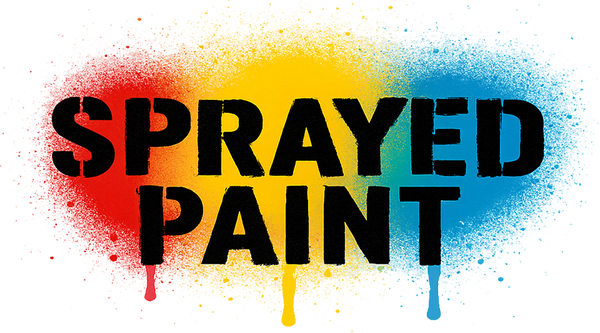Artwork Description
Zombie Hand Tag Original Street Sign Painting by RD-357 Real Deal Spray Paint Mixed Media One of a Kind of Artwork on New York City No Parking Notice Sign Pop Graffiti Street Art Artwork.
2014 Signed Spray Painting Original Artwork on Real NYC Reclaimed No Parking Metal Urban City Street Sign Size 18x12 of a Decapitated Zombie Hand Grasping & Spraying a Can of Krylon Spray Paint with the RD Tag in Purple.
RD-357's Vivid Depiction of Urban Rebellion: The Zombie Hand Tag
The 'Zombie Hand Tag' original street sign painting by RD-357, also known as Real Deal, is a provocative piece of street pop art and graffiti that embodies the rebellious spirit of urban street culture. Completed in 2014, this artwork uses a New York City 'No Parking' metal sign as its canvas, transforming a mundane object of urban regulation into a striking visual statement. The depiction of a decapitated zombie hand grasping and actively using a can of Krylon spray paint infuses the piece with a sense of post-apocalyptic creativity and survival.
Interpreting the Symbolism in RD-357's Art
This piece is rich with symbolism that resonates with the ethos of graffiti and street pop art. The zombie hand, often a symbol of horror and the macabre, is presented here as a vessel of artistic creation, subverting its usual connotations of death and decay. By wielding a can of Krylon, the hand breathes life into an art form that thrives on the fringes of society. The RD tag in purple spray paint marks the artist's signature and serves as an act of claiming territory, a fundamental aspect of graffiti culture. The choice of a 'No Parking' sign as the medium is deliberate and insightful. It represents the restrictions and boundaries imposed by society, which street art often aims to transgress. The act of a zombie hand, a symbol of defiance against mortality, spraying over such a sign is a metaphor for the resilience of street art. It refuses to be confined or controlled, much like the undead refusing to remain in the grave.
The Aesthetics and Technique in RD-357's Zombie Hand Tag
RD-357's technique in creating this piece highlights street art's raw and unapologetic beauty. The artwork, measuring 18x12 inches, showcases the artist's skill in manipulating spray paint, a medium often dismissed by the traditional art world but revered in street culture. The dripping paint from the Krylon can, the textured portrayal of the zombie flesh, and the striking contrast between the hand and the sterile sign it occupies all contribute to a composition that is as much a visual triumph as a statement piece. The use of mixed media, incorporating both the physical sign and the spray paint, reflects the layered nature of street art. It is both an object and a message, a tangible piece of the city's fabric and a commentary. The artwork challenges viewers to see beyond the surface to understand the depth and complexity of the messages conveyed through this unique artistic expression.
Conclusion: The Cultural Impact of RD-357's Work
The 'Zombie Hand Tag' is a potent example of how street pop art and graffiti can alter perceptions and engage with viewers on a visceral level. RD-357's work demonstrates street art's transformative power, which can turn a simple traffic sign into a thought-provoking piece that questions authority and celebrates the irrepressible nature of human creativity, even in the face of societal collapse. RD-357, whose real name and country of origin remain unknown, much like the enigmatic nature of street art itself, has created a piece that stands as a testament to the enduring spirit of street pop art and graffiti. The 'Zombie Hand Tag' is a visual spectacle and a narrative of resistance, a declaration that even in a world overrun by the metaphorical zombies of conformity and control, the artist's spirit remains unvanquished.

